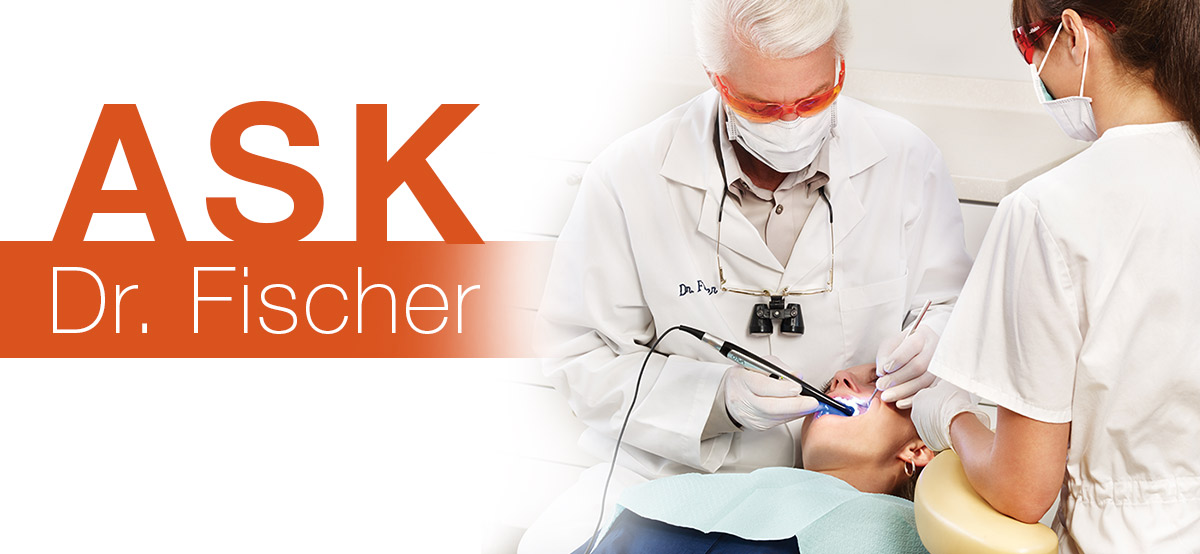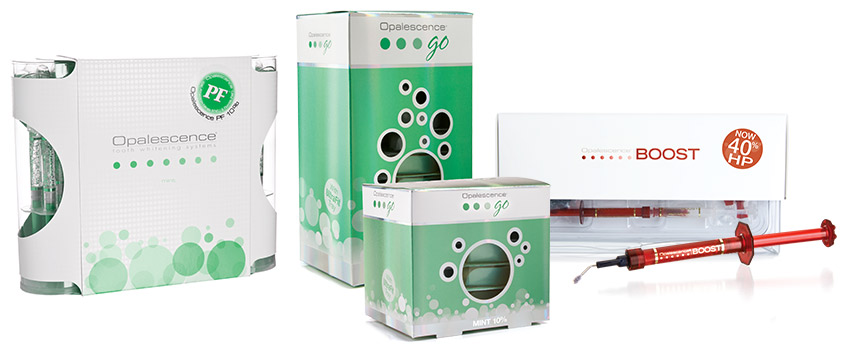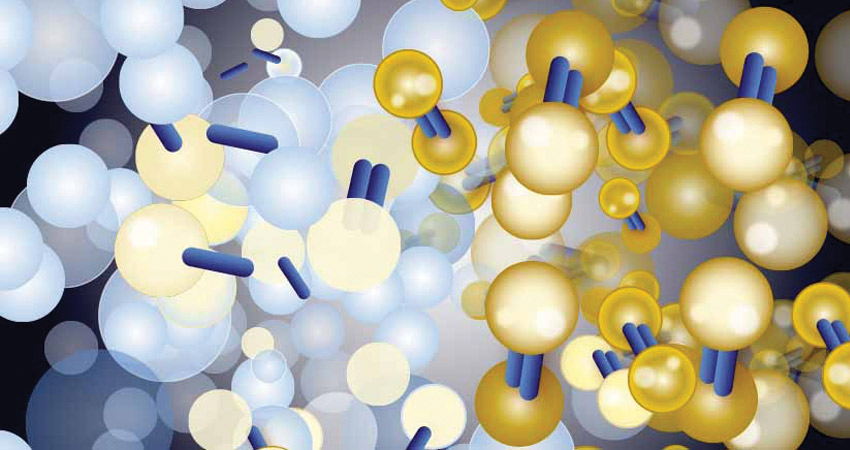As a new regular feature on The Arch: The Ultradent blog, we’re going to share Dr. Fischer’s responses to the frequently asked questions he receives about Ultradent products and dental procedures. In this, our second edition of “Ask Dr. Fischer,” he answers questions about the science behind tooth whitening. He also answers a very frequently asked question about the effects of tooth whitening on enamel. Enjoy!
 Can you help us understand more about the science behind tooth whitening?
Can you help us understand more about the science behind tooth whitening?
 Sure. As a general rule, most of the stains that appear from inside a tooth are made up of organic molecules that are held together by conjugated double bonds. Molecules with conjugated double bonds selectively absorb some wavelengths of lights and don’t absorb other wavelengths, which makes the tooth appear dark.
Sure. As a general rule, most of the stains that appear from inside a tooth are made up of organic molecules that are held together by conjugated double bonds. Molecules with conjugated double bonds selectively absorb some wavelengths of lights and don’t absorb other wavelengths, which makes the tooth appear dark.
In a conjugated double bond, each bond is made up of electrons that oppose each other. Now, peroxide is fabulous for breaking these conjugated double bonds. That little oxygen radical—that little O3 in peroxide—is very eager to attach to an electron in order to stabilize and get back to O2 again. So the O3 goes into the tooth and attaches to one of those electrons, breaking the conjugated double bond and an O2 molecule forms. When you use peroxide to break a conjugated double bond into single bonds and smaller molecules, the molecules become translucent and the stain appears to go away.
 Can whitening decalcify the tooth due to the acidity of peroxide?
Can whitening decalcify the tooth due to the acidity of peroxide?
 It’s important for dentists to avoid whitening agents that have a pH lower than five, as these agents have been shown can cause demineralization. You want to obtain and use whitening agents that ideally have a pH of about six, maybe closer to seven. But peroxide in and of itself, when it is in a near neutral formulation, is not decalcifying to the tooth. There are some clinicians out there that believe they need to remineralize the teeth after whitening, but, at the end of the day, the enamel with not be demineralized or harmed if you’re working with a peroxide that has a close-to-neutral pH.
It’s important for dentists to avoid whitening agents that have a pH lower than five, as these agents have been shown can cause demineralization. You want to obtain and use whitening agents that ideally have a pH of about six, maybe closer to seven. But peroxide in and of itself, when it is in a near neutral formulation, is not decalcifying to the tooth. There are some clinicians out there that believe they need to remineralize the teeth after whitening, but, at the end of the day, the enamel with not be demineralized or harmed if you’re working with a peroxide that has a close-to-neutral pH.
Learn more about Opalescence »
 Can you help us understand more about the science behind tooth whitening?
Can you help us understand more about the science behind tooth whitening?
 Sure. As a general rule, most of the stains that appear from inside a tooth are made up of organic molecules that are held together by conjugated double bonds. Molecules with conjugated double bonds selectively absorb some wavelengths of lights and don’t absorb other wavelengths, which makes the tooth appear dark.
Sure. As a general rule, most of the stains that appear from inside a tooth are made up of organic molecules that are held together by conjugated double bonds. Molecules with conjugated double bonds selectively absorb some wavelengths of lights and don’t absorb other wavelengths, which makes the tooth appear dark. In a conjugated double bond, each bond is made up of electrons that oppose each other. Now, peroxide is fabulous for breaking these conjugated double bonds. That little oxygen radical—that little O3 in peroxide—is very eager to attach to an electron in order to stabilize and get back to O2 again. So the O3 goes into the tooth and attaches to one of those electrons, breaking the conjugated double bond and an O2 molecule forms. When you use peroxide to break a conjugated double bond into single bonds and smaller molecules, the molecules become translucent and the stain appears to go away.
So, contrary to popular belief, when one whitens with peroxide they’re not actually removing stains from the tooth. What is actually happening is that the whitening solution is changing those molecules and the way they reflect or absorb light. The molecules become translucent, making the tooth appear whiter.
Tooth Whitening occurs when peroxide changes the way stain molecules reflect or absorb light
So, contrary to popular belief, when one whitens with peroxide they’re not actually removing stains from the tooth. What is actually happening is that the whitening solution is changing those molecules and the way they reflect or absorb light. The molecules become translucent, making the tooth appear whiter.
 Can whitening decalcify the tooth due to the acidity of peroxide?
Can whitening decalcify the tooth due to the acidity of peroxide?
 It’s important for dentists to avoid whitening agents that have a pH lower than five, as these agents have been shown can cause demineralization. You want to obtain and use whitening agents that ideally have a pH of about six, maybe closer to seven. But peroxide in and of itself, when it is in a near neutral formulation, is not decalcifying to the tooth. There are some clinicians out there that believe they need to remineralize the teeth after whitening, but, at the end of the day, the enamel with not be demineralized or harmed if you’re working with a peroxide that has a close-to-neutral pH.
It’s important for dentists to avoid whitening agents that have a pH lower than five, as these agents have been shown can cause demineralization. You want to obtain and use whitening agents that ideally have a pH of about six, maybe closer to seven. But peroxide in and of itself, when it is in a near neutral formulation, is not decalcifying to the tooth. There are some clinicians out there that believe they need to remineralize the teeth after whitening, but, at the end of the day, the enamel with not be demineralized or harmed if you’re working with a peroxide that has a close-to-neutral pH. Learn more about Opalescence »











